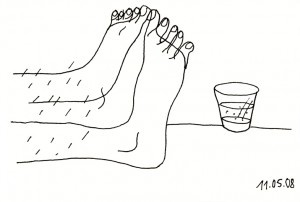 |
By Michael F. Mascolo, Ph.D.
Several years ago, I had the opportunity to conduct research in India. My research compared the sense of self among American and Indian adolescents. I asked adolescents to describe how they experienced themselves in relationships with different people. I also asked them to describe how they experienced themselves when they were “just being me”.
The results were illuminating. I had always been told that adolescents and adults in Asia thought of themselves in ways that were different from Americans. Americans tend to be much more individualistic than Asians (even today, during these times of great change). Americans tend to think of themselves in terms of their individual desires, needs and goals (e.g., I want to be happy; I want to get a good job; I want to be successful). Indians also tend to think of themselves this way, but they also are much more concerned with their relationships to other people. Indians are much more aware of their role as mother, father, daughter, son, wife, husband, and so forth.
The most interesting finding from this study, for me, was how Indian and American adolescents described “the real me” – who they were outside of any particular relationship with someone else. Take a look at the words used by Indians and Americans. What do you notice?
| Indians | Americans |
| FriendlyLovingSensitiveRespectful
Obedient |
CarefreeRelaxedFeeling GoodHappy
Goal Directed |
When describing the “real me”, the Indian adolescents still tended to describe themselves in terms of how they are connected to others. In contrast, Americans tended to describe themselves in terms of their inner feelings and personal goals.
I was struck by the number of times that American adolescents used terms like “carefree”, “relaxed”. Somehow, the American adolescents placed a high importance on wanting to feel good and have fun. These terms rarely came up in the Indian interviews. For me, this suggested that Americans were not only more preoccupied with themselves than the Indian adolescents, but also that they wanted to define themselves as more-or-less free from their obligations to others. In contrast, the Indian adolescents tended to see themselves as always open to the needs of others.
What Makes a Life Good? Who Cares?
People can use the word “good” in many ways. Something can be said to be good if it brings pleasure. That is the non-moral use of the term. Something can be said to be good if it has value. This is a more moral use of the term. Which use of the term do we use in our everyday lives? For many of us – especially children and teens – something is good if it brings pleasure or amusement. From this view, to live a good life is to live an entertaining life – one that is filled with pleasure of fun.
But the second meaning of “good” is more relevant to living a happy life. A good life, it turns out, is not simply one that is filled with pleasure. A good life is one that has value. If this is so, then it becomes very important to teach our children to think about what makes what they do good. Why are you doing what you are doing? Simply because it brings pleasure? Or because it is somehow good? How can we pursue that which is good rather than that which is merely pleasurable?

















